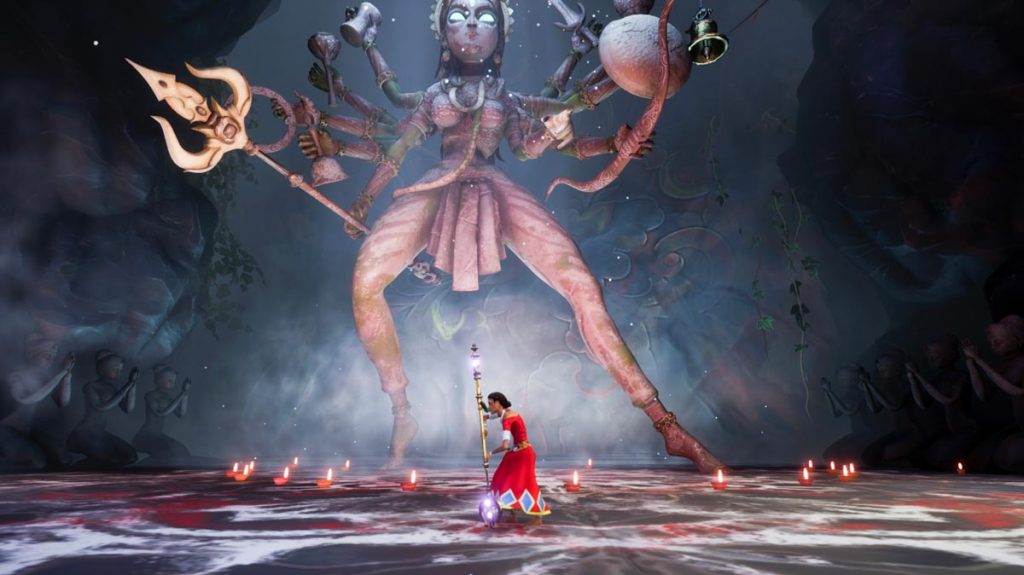The video game immerses us in Hindu art and architecture as we guide Raji to rescue her kidnapped brother from a demon
Video games are a bigger industry than movies—$180 billion in 2020, compared to $100 billion for films. Driving their popularity is a rapidly advancing technology that creates a directed, immersive and realistic experience. Raji, with stunning visual imagery, transports you to ancient Rajasthan. We invited our Young Writer and avid gamer, Aditya Muthaiah, to introduce the epic, and our contributing artist and art expert, Baani Sekhon, to explore the game’s incorporation of traditional forms of Indian art.
By Aditya Muthaiah, Oregon, USA

Google’s audience rating summary of Raji: An Ancient Epic, is 4.9, just a tenth point off a perfect five—and that’s based on nearly 3,000 reviews. Raji was nominated for the Best Debut Game at the Game Awards 2020, arguably the most important award in game history, and won the Grand Prix, Winners Circle and Best Narration awards at the Taipei Game Awards 2021. More nominations and awards followed at major gamer functions such as Pegasus 2021. This is remarkable for an “indie” production by a small team, as opposed to games produced by large, well-funded studios.
Raji: an Ancient Epic is based on a young girl named Raji, a circus performer, and her brother Golu, who is a storyteller. The demon Mahabalasura’s henchmen kidnap Golu on the day of Raksha Bandhan, when sisters traditionally tie a rakhi around the wrists of their brothers. Raji then sets out to rescue her brother. The invasion of the human realm by Mahabalasura has enraged Durga, Vishnu and Siva, who then assist Raji. As the story develops, Raji learns that her fight with the demons has a greater purpose: to save humanity, a task entrusted to her by the Gods, in a major battle between good and evil.
The game is a single-player [see sidebar for this and other gaming terms], action-packed game with many hints to Indian mythology and architecture and shadow puppet cutscenes. Goddess Durga and Lord Vishnu often converse in the background. There’s a lot of Indian music throughout, mainly flute and tabla. This game is great because it shows us a lot about ancient India.
The experience begins with a 2-D shadow-puppet cutscene, after which we come to the playable game side of things and first see Durga and Vishnu debating if Raji can take on Mahabalasura. Vishnu, unsure of Raji’s abilities, asks Durga. “Are you very sure about Raji’s intelligence and power, Ma Durga?” Ma Durga knows that Raji will be able to save her brother.
As the player, we can choose three abilities. We witness ancient Indian architecture as Raji starts her path and combative encounters demons along the way. The game continues with more fights, and finally Raji battles Mahabalasura in the boss fight. Raji uses her acrobat skills from the circus during the fight and avoids a few attacks from Mahabalasura, although Mahabalasura’s attacks are too strong. In the end, if the player is good and has chosen the right abilities, they will be able to either take down Mahabalasura or will have to try again.
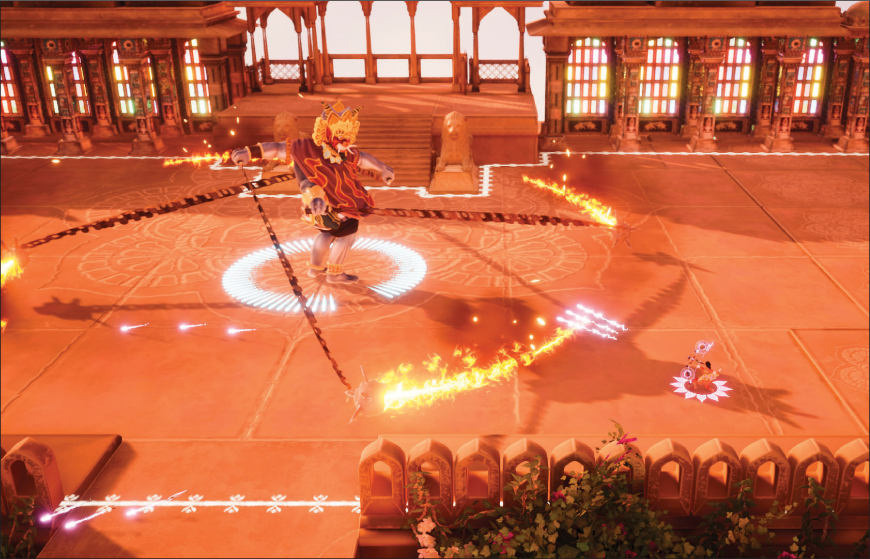
This game deserves all the hype because of the fun and original game-play mechanics such as the combat and visuals. The reviews are high as well, because it is a game you can enjoy when you just need a break to relax, with or without company. The game is not so easy that you will get bored, but it is not super difficult. So you will have a challenge, but in the end, you will feel proud of finishing and want to try again, just because of the enjoyability.
More on the game-play mechanics side of things: one of my favorite mechanics is how the weapons and the powers will upgrade when you find different areas on the map and when you speak to the Gods. You start off with a spear, a bow, a sword, shield and a chakram that you use countless times when fighting the demons.
I did find some issues Raji. I think it would be more enjoyable to play online and as multiplayer, for example, using the arrow keys and WASD for multiplayer on a PC. On the Switch, you could make it so that each controller on the Switch is one player—but only one to four players should play at a time, or the game would get chaotic. Another issue was I could not find the in-game menu on how to change my keybinds. This is important, because the default controls are not optimal for the Nintendo Switch or KBM on the PC.
The game crashed and kicked me out with frequent frame drops, but that might just be the software I have. Besides the problem with the controls and the suggestion for future change with multiplayer, the game is perfect with no major issues. Also, they may have fixed some or all the issues when they recently added the game to Xbox and Playstation, so we will see what the results look like on the console.
Aditya Muthaiah, 12, is going into 7th grade in fall 2021 at Meadow Park Middle School in Beaverton, Oregon. His interests are gaming, Indian classical music, and playing the piano.
A Close Look at Raji’s Exquisite Art
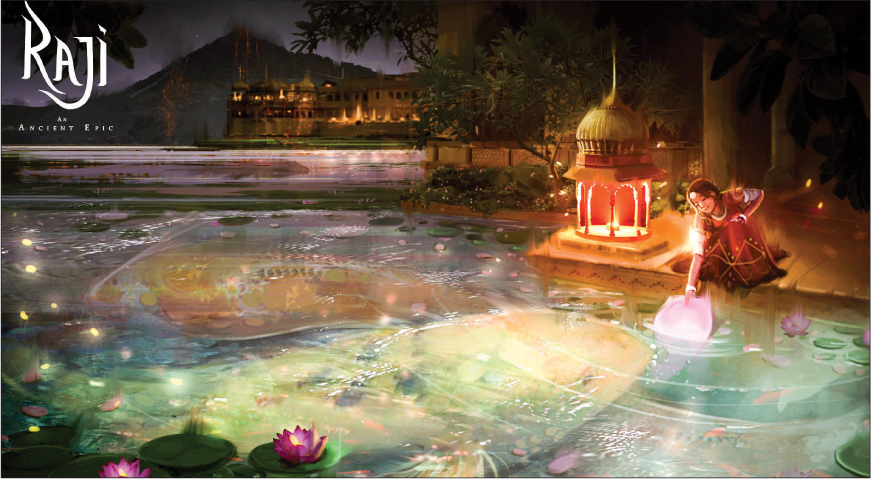
By Baani Sekhon, Chandigarh, India
Pune-based nodding heads games, a small indie Indian studio founded by Shruti Ghosh, Avichal Singh and Ian Maude, has put India on the international game-development map, living up to the top industry standards with their ambitious debut game Raji: An Ancient Epic.
The game is an inventive blend of culturally rich environment and detailed visuals that capture the Hindu mythology quite perfectly. Indian folk art is skillfully exhibited, with shadow puppetry for cutscenes along with Pahari art style for all the graphic elements. The shadow puppetry sincerely adheres to its indigenous originality with detailed 2-D figures along with the puppeteer sticks.
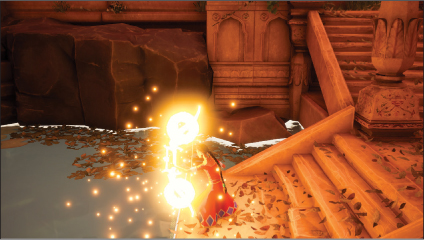
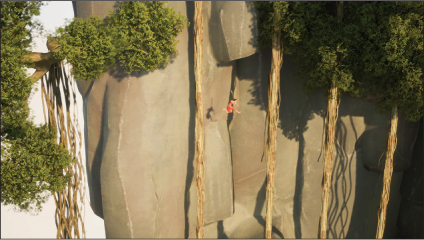
Raji, the protagonist of the game and the embodiment of Goddess Durga Herself, slays an array of villains with fluid and agile moves owing to her acrobatic skills as a street performer. The skillful jumps and somersaults over obstacles are spine-tingling. It’s a pure delight to experience how she effortlessly runs up walls and spins around poles, striking devastating attacks and dodging villains.


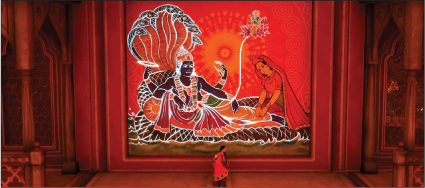
The flavor of the game is set by the mesmerizing background score which is composed with the classical Indian musical instruments that follows the momentum of the game, as well as the fervor and the emotions that Raji’s actions evoke.
At every level, she is blessed by the Gods with divine weapons from Hindu mythology, including the trishula (trident), chakra (discus) and gada (mace). Each time Raji is blessed with a godly weapon, the gamer gets an option to select different elemental powers, including fire, lightning, ice, earth and rage. This facet is called “Favor of Gods.”

For the player, Raji’s world is zoomed out to a bird’s-eye view, letting them immerse in the vast scenic locations in all their glory. The elevated view makes the player experience the visuals from perspective of the Gods, who are ever present to support Raji. Adding to this ambience is the sophisticated camera work that pans, zooms and tilts across the action and exhibits the locations in sleek, cinematic fashion.
As Raji heads towards the culminating fight with Mahabalasura, on each level the player comes across recognizable settings inspired from historic sites, including the Amer Fort, Jaisalmer Fort, Udaipur City Palace, Jaipur City Palace, Lake Pichola and the Ajanta Caves murals.
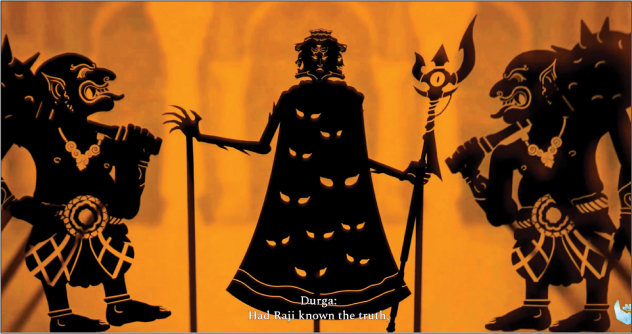
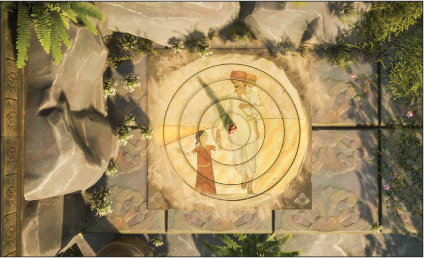
Raji must cross three large levels before finally confronting Mahabalasura. Each level is dedicated to a particular God. The “Fortress of Jaidhar” centers around Goddess Durga. “Hiranya Nagari” is the heavenly city of Lord Vishnu, while the “Land of Mystics” characterizes Lord Siva.
The Fortress of Jaidhar, with warm colors dominant, is beautifully designed with towering statues lit with fire lamps, sun-filtered stained-glass windows, elegant royal chambers and aesthetically embellished doorways. Hiranya Nagari has cool tones. It is calm, graceful and paradisiacal. The main theme of this city is the lotus, which beautifully complements the glittering water components and the blue-tinted backdrop. Lastly, the Land of Mystics is set in the foothills of the Himalayas. The atmosphere is sombre and muted, represented by overgrown foliage, vines and rocks.


In each level, Vishnu narrates various Hindu mythological stories, which are shown painted on the walls as murals. The players get to learn about the birth of Goddess Durga and about Shakti, the primordial cosmic energy. The avatars of Lord Vishnu, legend of Garuda, nine avatars of Goddess Durga and other such stories from mystical lore are explained. Enriching the voice acting is the classical Indian music. The sound design follows the momentum of the game, as well as the fervor and the emotions that Raji’s actions evoke. The game is an informative gateway into the colorful world of Hindu mythology and beautifully represents Indian culture.
This entertaining and adventurous tale about sibling love leaves the audience asking for more. The ending, as I encountered it, seems a bit abrupt, though, and a sequel bringing Raji’s journey to a logical conclusion would be welcome.

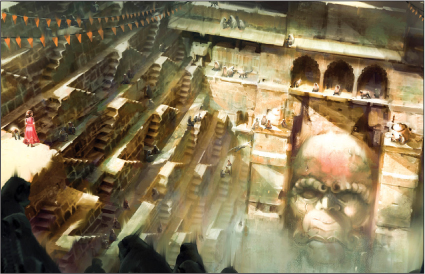
Baani Sekhon is a postgraduate in fine arts, armed with an extensive experience in the creative industry. She works independently as an art director, curator, writer, designer, illustrator and fine artist. Her forte in writing is art-related subjects, be it about contemporary art scenarios or historical subjects.
